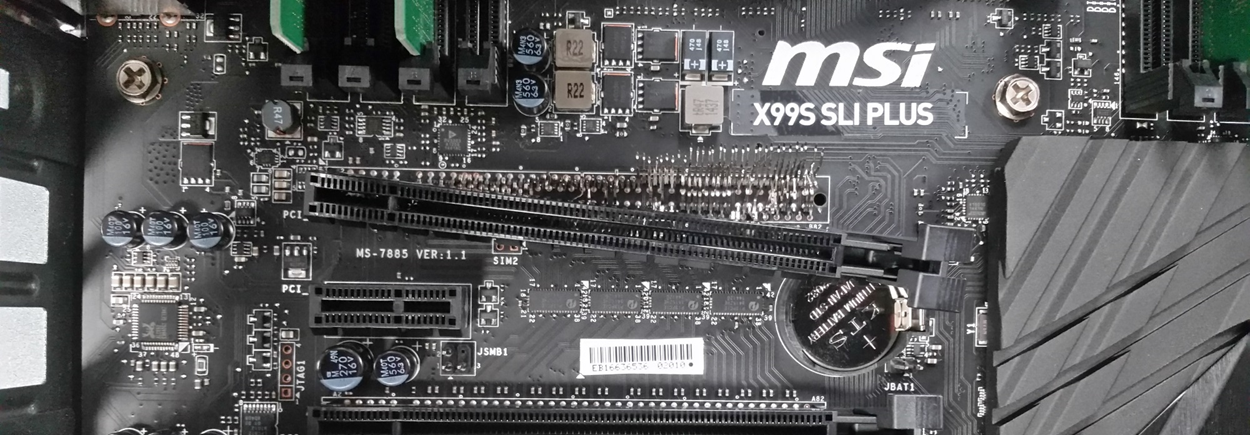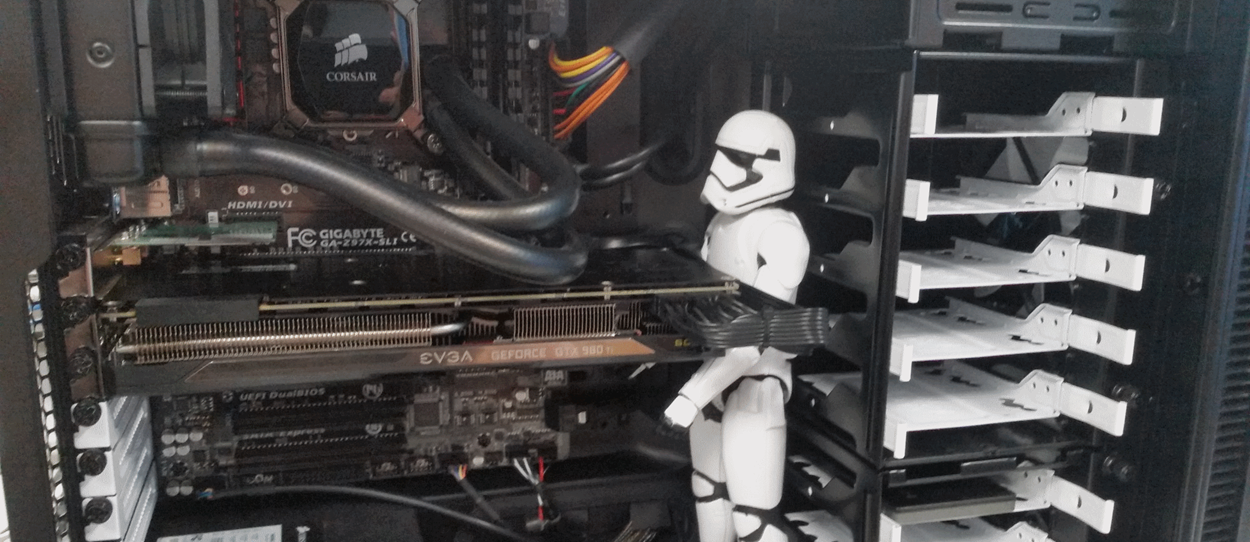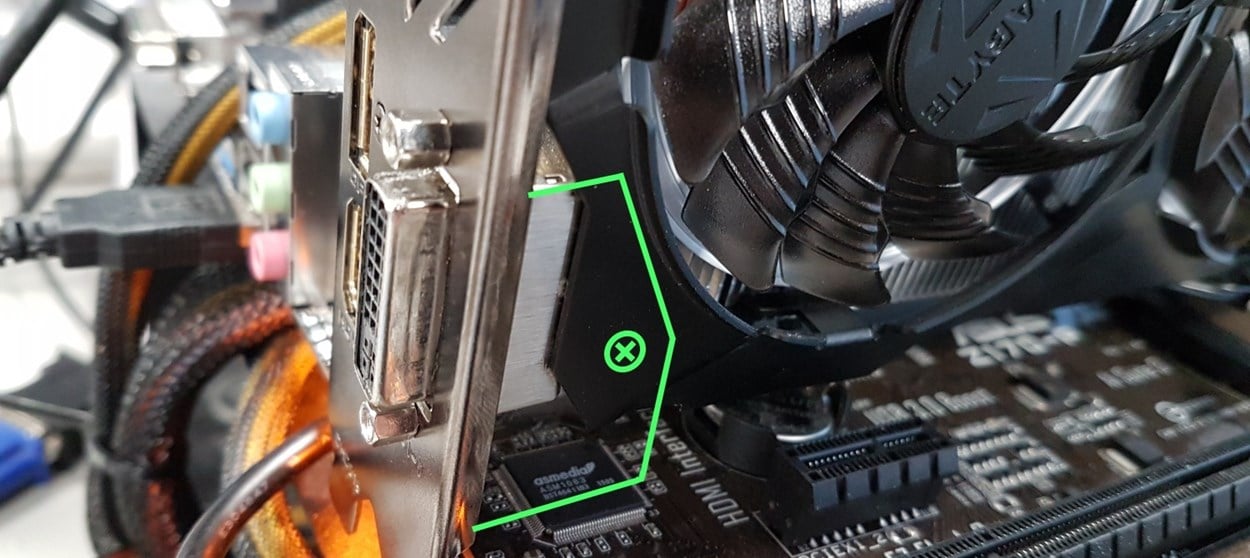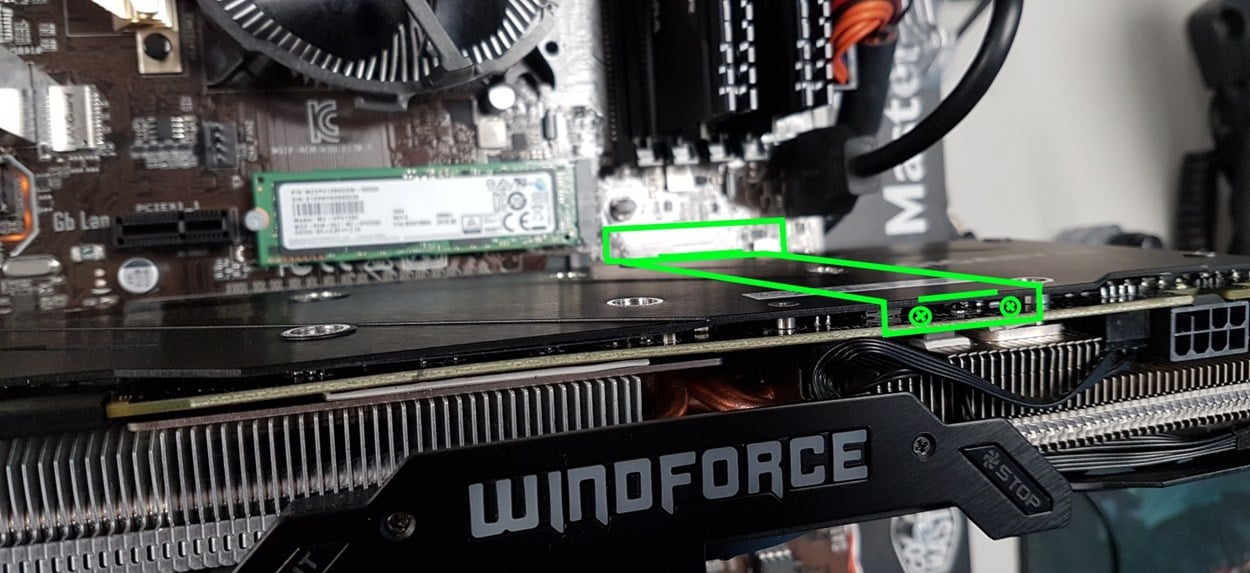
Over the last couple of years, we’ve seen an increasing trend of graphics cards getting larger, particularly those with factory overclocks where the manufacturers tend to make the cards as large as possible so that they can fit multiple fans.
Working in repairs, I’ve dealt with a number of computers where the graphics card has sagged to the point that it’s caused damage to either itself or the motherboard. And as graphics cards just get bigger and heaver, I think it’s only going to become a greater problem as we go on.
The issue stems from the design of the PCI Express slot on the motherboard and the graphics cards themselves. Up until just a few years ago, graphics cards were typically quite small and would extend only a little past the slot on the motherboard and take up a single slot at the back. This was fine, as it wasn’t putting any strain on the slot or the card, and everything was light enough to stay in place both in transit and over time with the computer sat in use. Despite the change from AGP or PCI to PCI-Express, the general fitting of a graphics card hasn’t really changed in three decades but the graphics cards themselves have.

As graphics cards have gotten more advanced, they’ve also become bigger. For gaming models at least single slot cards are a thing of the past and many higher end units are longer than the width of the motherboard they run off, plus many manufacturers now opt to fit a metal backplate covering the circuit board at the back of the card. Despite all this however the card is still fitted in the same way with a single slot and expansion slot mounting which has led to the unfortunate increase in sagging graphics cards.
When building a system, we do what we can to prevent it as much as possible. PCI-Express power cables are often used as additional support, cable tied to the card and then sufficiently tightened to reduce the flex on the end of the card and we fit computers that are being shipped with expanding foam to hold everything in place and minimise the risk of the graphics card damaging the motherboard in transit as in some extreme circumstances we’ve even seen the PCI-Express slot ripped clean off the motherboard.

A computer sat in use of course won’t suffer to this extent, but over time the weight of the card will still cause it to droop downwards into the computer. While the circuit board of the graphics card is manufactured to withstand this to some degree, in advanced stages the sag can cause graphical artifacting or for the card to stop working completely or widen the PCI-Express slot to the point that the pins on the connector no longer make contact, though admittedly this isn't terribly common.
So what can be done to stop this from happening?
Over the last year we’ve started seeing motherboards with metal reinforced PCI-Express slots that help them carry the load of the card better, but I still don’t think this is sufficient. A simple home remedy would be to just prop the end of the graphics card up with something so that it stays level, and you can find many pictures of scaffolds made from Lego or Meccano or other toys and I’ve personally used a screwdriver with a removable bit in the past. Any of these will keep the graphics card safe over years of use, but it’s hardly an elegant solution. Others suggest using thin fishing line tied to somewhere towards the top of the case as a sling, which would give a cleaner visual than something propping the card up would.

I’ve also seen some cases that come with a built in support bar, although they’re very uncommon, and there are some companies who manufacture support brackets that are mounted onto the graphics card to hold them in place but I think that the makers of graphics cards and motherboards could do more to stop it at a design and manufacturing level.
To start with, the vast majority of motherboards made now will have a PCI-Express x1 slot immediately underneath the slot that’s being used for the graphics card so I’d propose making that an industry standard design. Due to most graphics cards now taking up two slots worth of space that x1 slot can’t be used for anything else anyway, so why not use it for the graphics card? By changing the design of the graphics card so that it has a second blank connector that would fit into this slot without any electrical connection, the weight of the card would then be distributed over both slots instead of just the one.

While doing this, the design of the expansion slots could also be changed, so that instead of just two screws attaching the bracket to the top of the card, it’s also attached at the bottom, removing any possibility of sagging there.
Finally, and perhaps most importantly, I’d suggest a support for the graphics card towards the other end of it. I’m no engineer to be able to come up with a functional design, but I feel that something akin to the kind of metal backplates we see for mounting large tower coolers on the back of the motherboard that then goes through and extends into a bracket that gets screwed onto the back of the graphics card should prevent any movement.

I’m of course not in a position of influence to make any changes like this to the computer industry, and the coordination required to make it a standard that graphics cards and motherboards adhere to would likely be significant. I feel that if anything like this is ever to happen it’s going to be from a vendor like Gigabyte, ASUS or MSI – someone who makes both graphics cards and motherboards and would be able to influence industry wide designs on a larger scale than one who just makes either component but not both.
And who knows, maybe someone somewhere in an R&D lab is already working on something like this and a few years from now graphics cards will all sit secure and straight, and we’ll never have to worry about a graphics card dying from sag again.
Thankfully, I’m clearly not the only one thinking about this.
Just this week as I was finishing off this article, I’ve seen that Cooler Master are releasing their new Universal VGA Holder which while I don’t think would be too great for systems on a shipping side of things, but definitely looks like it will do a good job once you have the computer at home.





